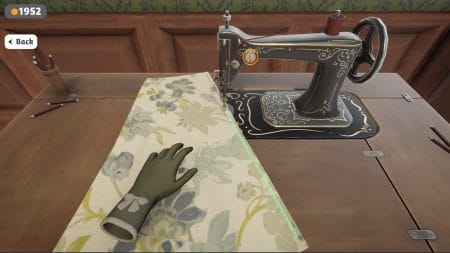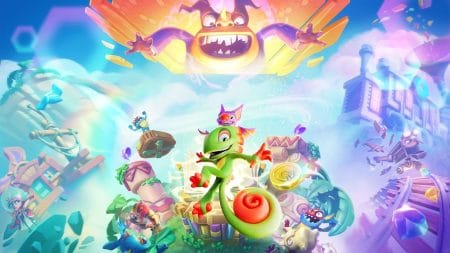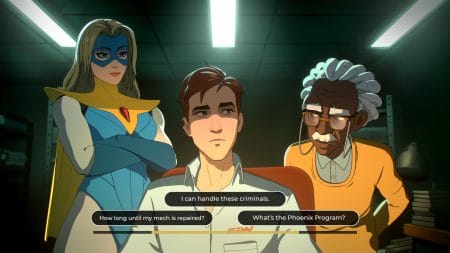I like sand well enough. At times, developer Deck13’s new game Atlas Fallen made me love sand.
Released on August 10 for PlayStation 5 and Xbox Series X/S, Atlas Fallen has competent action role-playing mechanics and a captivating world. The game captures many of the popular trappings of the current open-world market. While it does not set itself apart from the genre much, Atlas Fallen runs and plays so well that it is hard not to sit back and enjoy the sand surfing.
Atlas Fallen is a departure from Deck13’s most recent works, Lords of the Fallen (2014), The Surge (2017), and The Surge 2 (2019). These previous games wore their Dark Souls inspiration on their sleeves, and after the Gamescom 2022 World Premier Reveal trailer, I assumed Atlas Fallen would follow suit. The trailer teased monsters, superhuman or magical powers, co-op gameplay, and sand-surfing. With Atlas Fallen, the developer has traded its previous design influences for a more approachable, if not occasionally generic, action game. Atlas Fallen’s gameplay is more Assassin’s Creed: Origins or even Forspoken than Lords of the Fallen or The Surge—contributing to a bit of an identity crisis.
Atlas Fallen is fun to play and rewards players who navigate each and every corner of its open-ended landscape. It offers hidden Elite boss encounters, new powers, and plenty of lore entries to find. Yet while the gameplay loop is fun, I was often left unsure of who the intended audience of Atlas Fallen was due to the game’s “generic” identity.
The Story of Atlas Fallen
Atlas Fallen takes place in a sand-filled fantasy world. Players take the role of the Unnamed, an avatar that they customize at the start of the game. The story revolves around the tensions between rebellious humans and the tyrannical sun god Thelos. The story isn’t bad, just predictable and a little generic.
The protagonist is assisted throughout the game by a different god, Nyaal or “The Voice,” who is connected to the player character through a powerful gauntlet. This gauntlet grants the player access to otherwordly abilities, including Airdash, Unearth, Reveal, and Enhanced Crush. To propel the narrative forward, players collect Power Shards to upgrade the Gauntlet. These brief narrative interruptions often lack NPC interaction beyond Nyaal chatting with the Unnamed but provide some of the most interesting combat and platforming challenges of the main story.
Unfortunately, Atlas Fallen’s focus on driving the player toward these upgrades leaves the overarching story and its supporting NPCs in the dust. As the Unnamed, the player will meet a crew of characters, including Arif, Khendra of Bastengar, and The Queen. While some of these non-playable characters have compelling enough arcs, most aren’t very memorable—or even given proper names.
The writing and the voice acting are uneven throughout. At times, the script gets in its own way, taking away from moments that are meant to develop empathy or worldbuilding. The NPCs provide side quests that rarely influence the main story but do take the player to different corners of the world that they might not have stumbled upon otherwise.
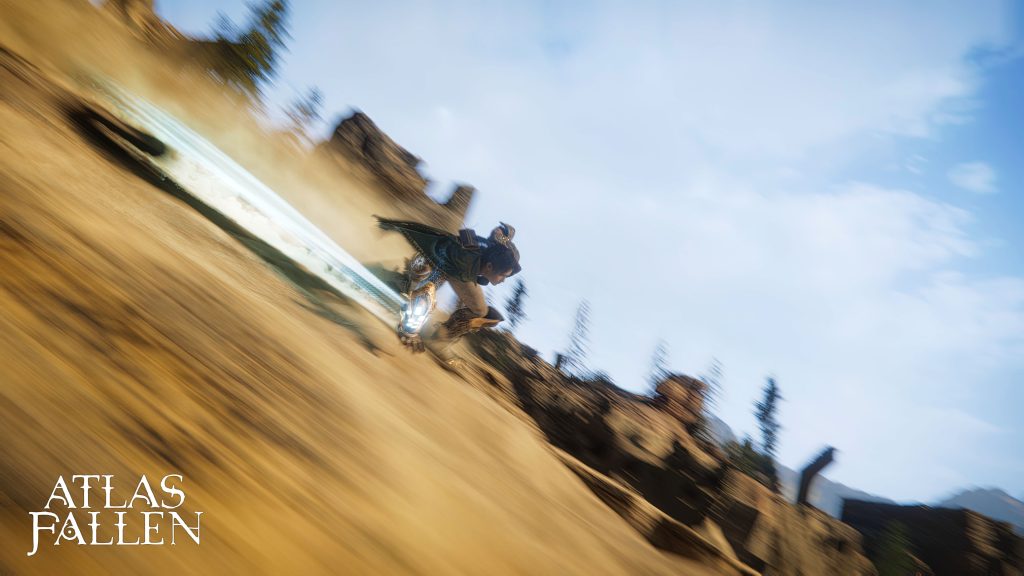
Surfing on the Sand
That said, the voice acting and the story are not why I’d recommend you play Atlas Fallen. The real star of the show here is the game’s sand surfing—and it’s great!
I spent most of my 17 hours with Atlas Fallen surfing through the sand collecting Fusion Materials and Artefacts. As I navigated the sands, I glided between Vantage Points that revealed the locations of the world’s secrets. With a tap of a button, the player character slides across the surface. There are a few ways to speed this motion up, but the base speed always moved with the right balance of urgency and leisure.
Exploring the World
I often chose to surf between new Anvils (checkpoints where players can upgrade their Gauntlet, Weapons, and Armor) rather than use them to fast travel so that I could engage with the world. This often added time between the main and side quests, but this travel mechanic felt so cool compared to traditional walking, riding, or trudging through open worlds. At its best, surfing this open world feels like the parkour systems found elsewhere, such as Square Enix’s Forspoken.
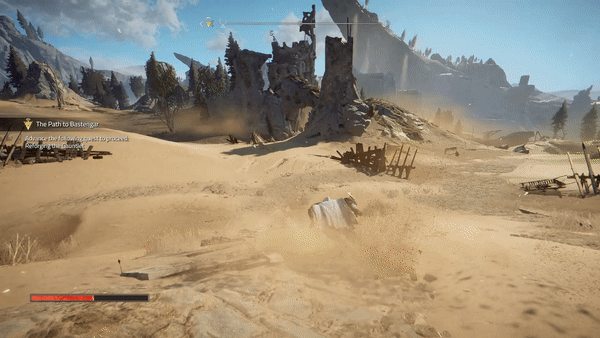
The surfing mechanic entices players—alone or with a friend in co-op—to explore Atlas Fallen‘s open-world segments. I found that the mechanic continued to be fun but often conflicted with the world design after the game’s opening hours. Atlas Fallen isn’t as open as you might expect, walking a fine line between modern open-world conventions and linear player progression. I felt this tension most notably when trying to glide to certain areas, only to discover that an invisible wall kept me from getting there.
Sand surfing feels most compatible with the world design when completing quests or challenges that open up the use of the feature. Several collectibles require a combination of sand sliding and quick use of the aforementioned Gauntlet abilities to navigate platforming-lite sequences. These never give the same challenge or sense of achievement as the platforming experiences that inspired them.
As players explore the desert, they’ll run into Wraiths, demonic monsters of various types that emerge from the sands, serving as guardians to Thelos. While Wraiths bring activity to the sands, there are also skittish, non-hostile wildlife roaming the desert plains. The design of the enemies and their fighting styles feel compatible with the rest of the player movement.
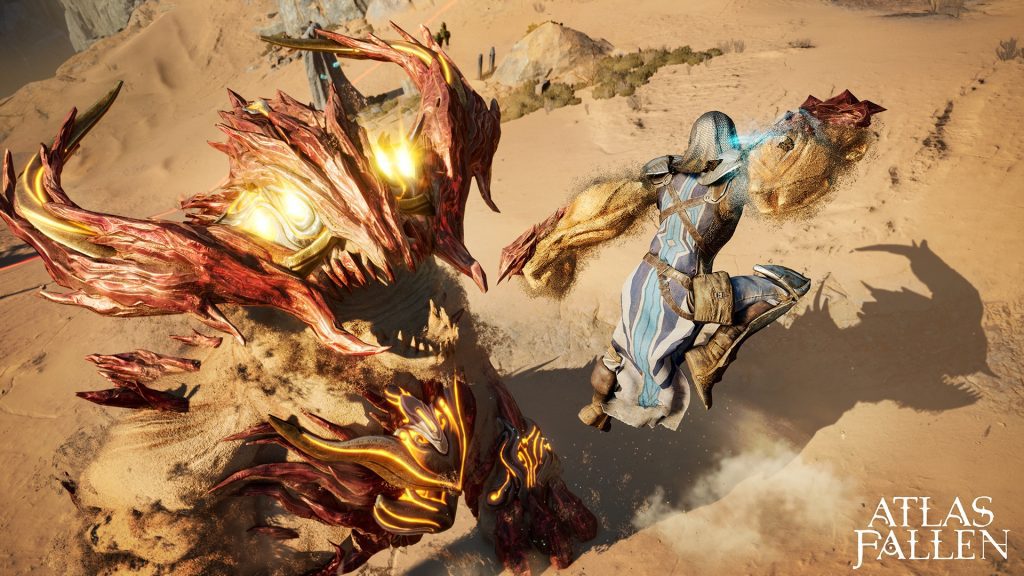
Combat in Atlas Fallen
Combat in Atlas Fallen is built around its Momentum system. The player builds up Momentum by landing attacks on enemies and defeating them. The more Momentum that the player builds up, the more damage that they can do against enemies—and consequently, the more vulnerable the player becomes.
Players fill slots on their Momentum Gauge by mixing and matching Essence Stones. This mechanic accounts for most of the depth you’ll experience during combat. Experimenting with Damage (Red), Momentum (Blue), and Survivability (Yellow) builds changed how I approached the game’s various enemy types and bosses.
Even with the Momentum gauge and Essence Stones, the game’s combat sticks closely to the action role-playing formula. Combos tend to consist of the same few button combinations. Players have access to three different weapons: the Dunecleaver (axe), the Sandwhip (whip), and the Knuckledust (fists). These weapons influence the momentum meter and speed of combat in different ways. When the combat system clicks, Atlas Fallen is fun.
The Shortcomings of Combat
Combining surfing with Airdashes (exactly what it sounds like) between enemies and their attacks begins entertaining enough. However, larger Wraiths quickly begin to feel like damage sponges, with hit points being divided across limbs. By the end of the game, repeatedly attacking these areas feels more repetitive than nuanced. Fighting Wraiths, especially boss battles, with a drop-in co-op partner was a more pleasant experience, however.
By the end of the game, I found myself sand surfing past enemy locations to avoid long-winded encounters. I have experienced the same combat mechanics in more innovative and interesting ways elsewhere. (The sixth-generation Prince of Persia trilogy comes to mind.) Despite this, Atlas Fallen is so well-crafted and plays so competently that even its lack of innovative combat scenarios can be overlooked.

Final Thoughts
Atlas Fallen is a competent action role-playing game that supports some interesting play styles with its Momentum gauge. While the story and voice acting disappoint, the stars of the show here are the sand surfing, platform navigation, and world.
Serviceable as it is, however, Atlas Fallen could have been so much better. Despite some interesting mechanics, its gameplay is so generic that it never really establishes its own identity. Players can enjoy it without much complaint, but in a year of stellar titles, its competence never truly shines.
Score: 7.8/10
Clint is a writer and educator based out of Columbus, OH. You can often find him writing about Middle English poetry, medieval games, or video games. He just finished a PhD in English at the Ohio State University. You can find his academic and public work at clintmorrisonjr.com.








